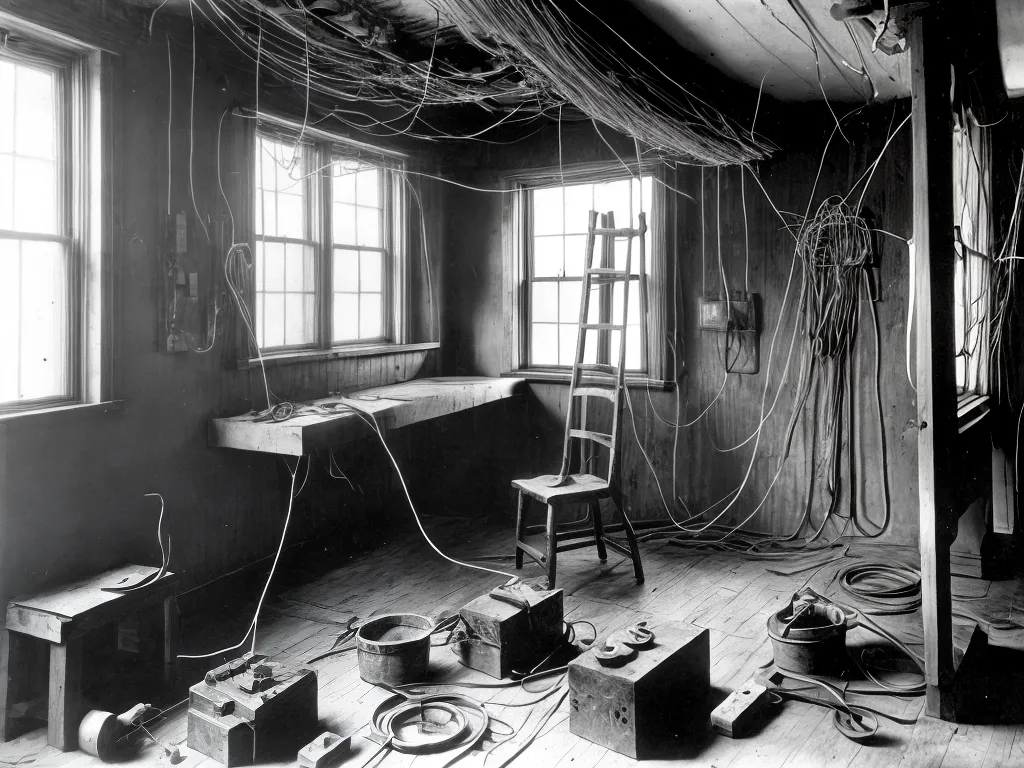
Introduction
As a young electrician in the late 1800s, I faced immense challenges in bringing the wonders of electricity to homes across America for the first time. With only rudimentary materials and limited knowledge, every new wiring job proved an arduous task. However, the joy of allowing families to experience electric lights and appliances for the first time made all the hard work worthwhile. In this article, I will provide a first-hand account of those early struggles to wire homes using the most primitive methods.
The Dangers of Working with Early Electrical Systems
In the early days of residential electricity, we had little concept of safety protocols or protection from electrical hazards. I suffered many shocking experiences that left me shaken and singed. Our tools and gear offered no defense against accidental contact with live wires. We worked on systems carrying 110-220 volts of raw current with our bare hands, often perched precariously high up on makeshift ladders and scaffolds. We received little formal electrical training and learned mainly through trial and error. Our rudimentary fuses and circuit breakers proved woefully inadequate, meaning electrical fires were common. It was dangerous work, but we saw it as the price of progress.
Using Basic Materials Like Knob and Tube Wiring
The electrical supplies available to us were extremely limited in variety and functionality. We had no flexible rubber or plastic insulated wires. The standard was knob and tube wiring, with ceramic tubes to protect wires through joists and porcelain knobs to carry them along boards. Installing these basic components required screwing tubes into beams and stringing wires between knobs. Compared to modern wiring methods, it was a slow and laborious process. We had to cut and bend heavy stiff copper wires by hand and join them with primitive splicing. The components were also prone to degradation and faults over time. Keeping early knob and tube wiring operational required endless repairs and tinkering.
Overcoming Limitations of Fuses, Conduit and Other Equipment
Other electrical equipment and components presented their own challenges. The fuses we used to protect circuits would often fail when currents exceeded 15-30 amps. Rewiring blown fuses was a daily chore before modern breakers came along. We had no flexible metal conduit to neatly route wires, just rigid iron piping. Lighting options were limited to basic incandescent bulbs, which provided a dim yellow glow compared to today's lighting. But for many families, even this was a revelation after living with no electricity. The generators providing power for early electric systems were finicky contraptions requiring constant maintenance to keep them chugging along. Despite all these limitations, we managed to get the job done.
Rewarding Work Bringing Simple Joys of Electricity
While the work itself was challenging, I found great reward in allowing families to enjoy simple electric conveniences for the first time. Seeing a child's face light up when the first lights came on at the flick of a switch made it all worthwhile. Hearing people gasp in amazement when experiencing their initial electric toasters, fans and irons were unforgettable moments. Though we take them for granted today, these devices seemed incredible wonders at the time, improving everyday quality of life immensely. More than our difficulty and discomfort, I remember the joy we brought people by wiring their homes for electricity with primitive tools in a bygone era. Those earliest days electrifying homes proved pivotal in spurring American innovation and changing society for the better.